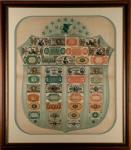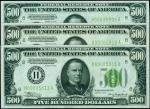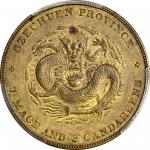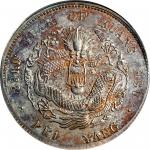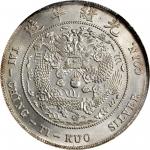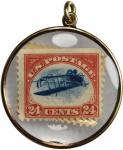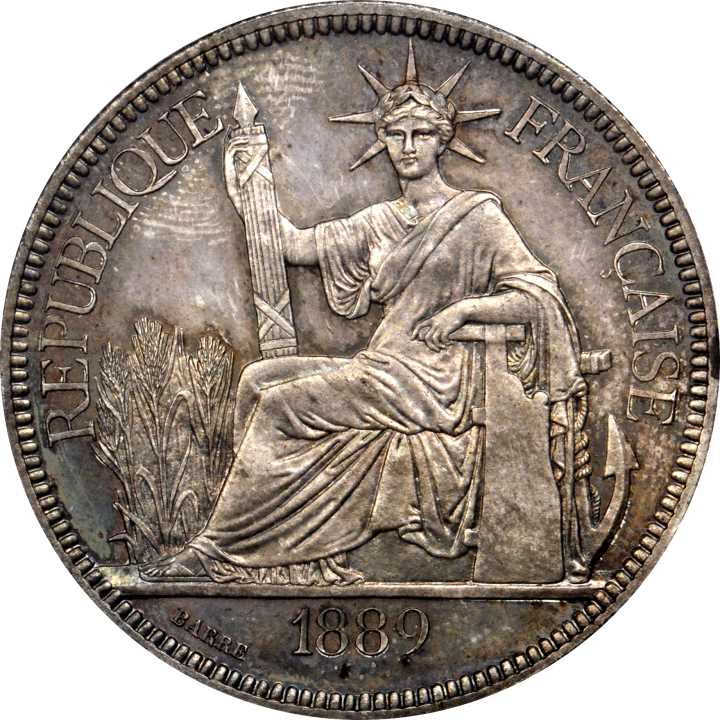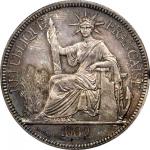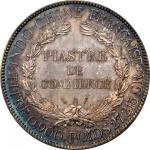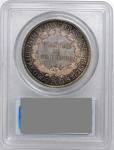39 mm; ~27.215 gms. Krause & Mishler-5; Gadoury-34; Lecompte-271; Mazard-220. The small mintage of only 100 proof strikings of this coin were produced for sale at the Exposition Universelle of 1889 (Paris World s Fair). The Exposition Universelle remains one of the best known World s Fairs for its iconic entrance arch, the Eiffel Tower (which was not entirely completed, but still open to the public). The event was held during the year of the one-hundredth anniversary of the storming of the Bastille, traditionally seen as the beginning of the French Revolution. This anniversary was of such importance in fact that one of the gathering rooms at the Fair was a facsimile of the Bastille and surrounding neighborhood, and was used for formal ball and meetings. Some of the famous attendees of this Fair included Thomas Edison, Vincent Van Gogh, and the future King Edward VII. The largest diamond known at that time was on display, the 184.5 carat “Imperial Diamond.” A major attraction at this World’s Fair was a “human zoo” or ethnological exposition featuring reconstructions of local villages and homes inhabited with actual natives of the French overseas empire. One integral portion of the French colonial empire was French Indo-China, located in Southeast Asia. The term Indo-China refers to the large region of Southeast Asia where Indian and Chinese influences mingled and formed cultures apart from either of these entities. However, French Indo-China refers to the lands of French protection and control in the region during the nineteenth and early twentieth centuries, specifically the three regions of Tonkin, Annam and Cochin China, which comprise modern day Vietnam and Cambodia, as well as Laos and parts of Thailand which were not added until after this coin was struck. By the mid-nineteenth century, French merchants and missionaries had been trading and preaching all over Southeast Asia; and by the early 1880 s, French troops had begun establishing firmer control in the region under the auspice of protection for French citizens in Indo-China. Tensions flared in 1884 after several instances of military skirmishes between the French military and the Chinese “Black Flags” under Liu Yongfu, who had come to aid the Vietnamese in resisting French colonial hegemony. These early skirmishes soon mushroomed into the Sino-French War which, while not strictly a French victory, did conclude with China relinquishing its protection of Tonkin, Annam, Cochin China and Cambodia to France. Thus in 1887, France established French Indo-China with local royal rulers governing as figure heads in three of the four territories, and a prefect and French bureaucracy governing in Cochin China.Three Paris Mint Chief-Engravers, all from the same family, collaboratively designed this iconic silver crown. First engraved by Albert Barre until his sudden death in 1878, finished by his brother Auguste Barre. The obverse design bears great similarity to the Great Seal of France as designed by their father Jean-Jacques Barre, with notable changes to reinforce its association with colonial affairs. The reasoning for basing the design on the Great Seal of France was to demonstrate French sovereignty over the region. Liberty reclines facing left, with her head facing, adorned by a laurel crown with seven rays. She holds a fasces (seen as a symbol of collective power) and resting atop a ship s tiller. Behind the tiller appears a marine anchor, symbolizing the administration of Indo-China by the French ministry of the "Marine and Colonies". Rice stalks appear to the left of Liberty, replacing the symbol of western agriculture, wheat. "REPUBLIQUE - FRANÇAISE" (the French Republic) appears around the design. In exergue, the engraver s name "BARRE" and the date of "1889" appear. The reverse design features the denomination at the center of the design, "PIASTRE DE COMMERCE" surrounded by a wreath of laurel (glory) and oak (longevity) leaves. "INDO-CHINE FRANÇAISE" (French Indo-China) appears above the wreath. The lower outer inscription describes the silver contents and weight, "TITRE 0.900. POIDS 27.215 GR." The mintmark of Paris ("A") appears below the central inscription flanked by two engraver s marks.Possessing an impressive strike, which provides sharp details in the design and exceptional mirror surfaces. The toning found on this piece is deep, aged and of the highest quality. Upon further examination, especially on the reverse design, the toning expands into beautiful iridescent hues of electric blue and sunset orange and pink. The third finest certified by PCGS, population one, with just two certified finer., Est. $25,000-$35,000











